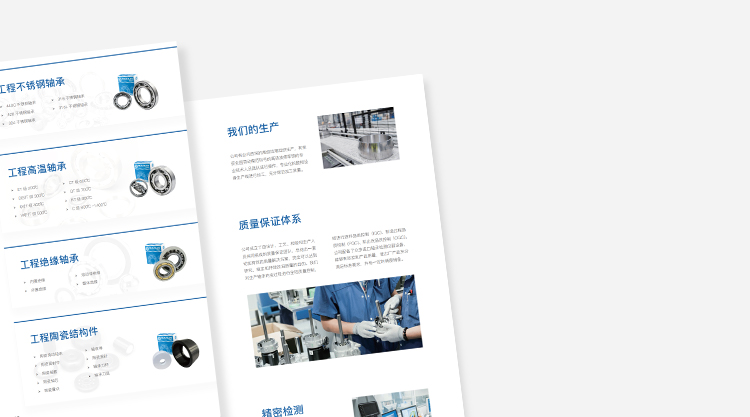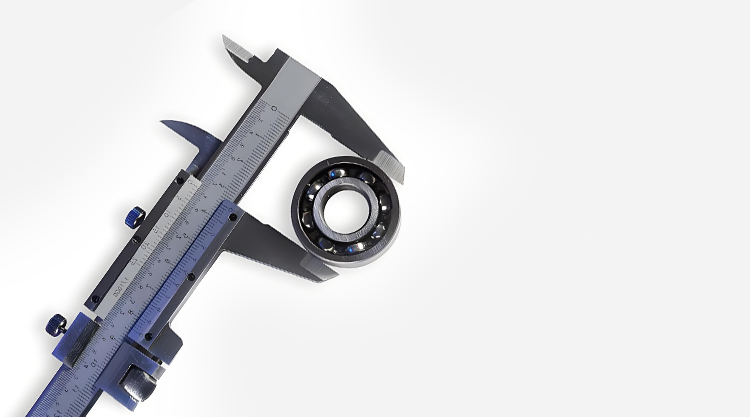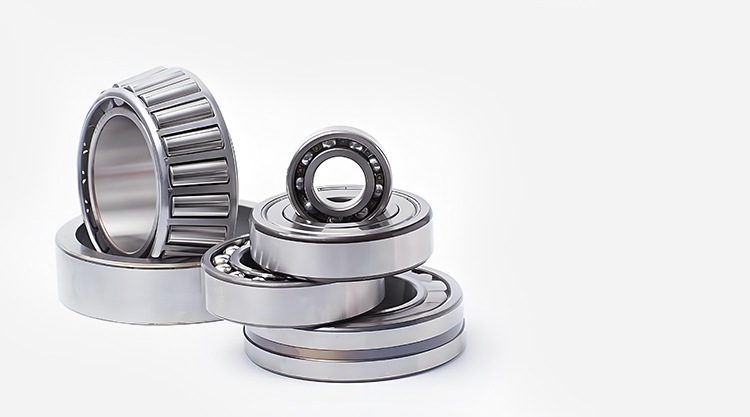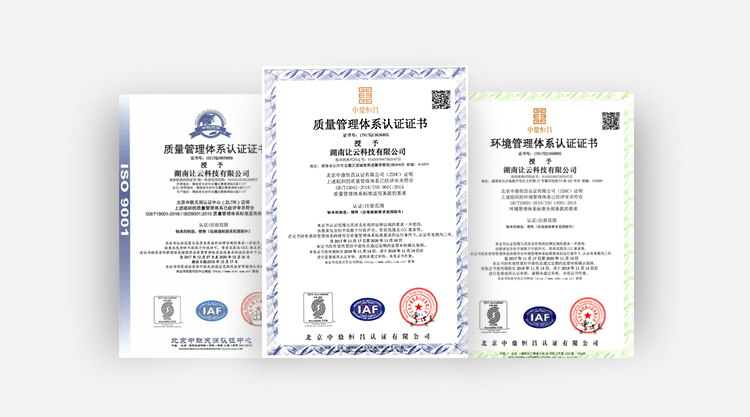Bearing Installation Methods and Techniques
Bearing Installation Methods and Techniques
Bearings, as core components of mechanical equipment, play a crucial role in determining the performance, service life, and operational stability of the equipment. This article provides comprehensive guidance from multiple dimensions, including installation methods, steps, precautions, heating temperature, and tolerance fits, for engineers and technicians.
1. Common Bearing Installation Methods and Techniques
The method of installing bearings should be selected based on the working conditions, interference fit, and type of bearing. Common methods include:
1. Press Fit Method
Applicable Scenarios: When the inner ring has a tight fit with the shaft and the outer ring has a loose fit with the housing, the bearing should first be pressed onto the shaft, then inserted into the housing; conversely, if the outer ring fits loosely, press it into the housing first.
Tool Selection: A soft metal (copper or low-carbon steel) sleeve should be used to avoid applying direct force to the cage. The sleeve dimensions should: the inner diameter slightly larger than the shaft (1-4mm), and the outer diameter smaller than the bearing's inner ring edge.
2. Copper Rod and Sleeve Tapping Method
For Medium and Small Bearings: Place a copper rod against the inner ring face and tap symmetrically and evenly to avoid applying force to one side, which could cause tilting or cracking.
Sleeve Installation: The sleeve should make full contact with the bearing end face to ensure even distribution of the hammering force, and a press machine can be used for higher efficiency.
3. Hydraulic Press Insertion Method
Precise Force Application: The force should be applied directly to the end face of the interference-fit ring. Pressure should never be transmitted through the rolling elements to prevent damaging the raceways.
4. Heating Installation Method
For Bearings with Large Interference Fits: Heat to 80-90°C (not exceeding 100°C), utilizing thermal expansion and contraction to simplify installation. During heating, avoid allowing the bearing to contact impurities at the bottom of the oil tank; it is recommended to suspend heating and control the temperature.
2. Bearing Installation Steps and Precautions
1. Pre-installation Checks
Cleaning and Inspection: Ensure that the bearing, shaft, and housing are free of burrs and contaminants; check the model, size, and fit tolerances (for example, a 6318 bearing with an inner diameter of 90mm should have a radial clearance of 0.016~0.046mm).
Lubrication Control: Adjust the oil amount based on speed; for speeds >3000 rpm, the oil amount should not exceed 1/3 of the bearing capacity to avoid excessive lubrication causing slipping.
2. Key Points During Installation
Force Application Direction: Apply pressure to the inner ring during inner ring installation and to the outer ring during outer ring installation. Do not strike the cage or seals.
Perpendicularity Check: Use a dial gauge to check the perpendicularity between the shaft and the centerline of the bearing. Any deviation should be adjusted to compensate within a 0.2-0.5mm gap.
3. Post-installation Adjustment
Self-aligning: Before tightening bolts, rotate the shaft to allow the bearing to self-align, then secure it.
Precautions
| Clean Environment | Dust entering the bearing will accelerate wear. Clean the shaft, hole, and tools before installation. |
|---|---|
| Rust Prevention | Sweat can cause rusting; wear gloves and apply mineral oil during handling. |
| Avoid Impact | Never strike the rolling elements or cage directly. Separate bearings (such as cylindrical roller bearings) must be heated before installation. |
| Special Bearing Treatment | Self-aligning roller bearings should be heated to 90-100°C for installation, and bearings stored for over a year should be cleaned and re-lubricated. |
3. Key Parameters and Technical Details
1. Heating Temperature Control
Optimal Temperature: 80-90°C. Temperatures exceeding 100°C can cause the rings to anneal, reducing hardness and lifespan.
2. Fit Tolerance Requirements
Transition and Clearance Fits: The inner ring and shaft commonly use interference fits, and the outer ring and housing use clearance fits. Specific tolerances should be referenced in the manufacturer's manual (e.g., ISO or GB standards).
Sample Tolerance Representation (some data based on standards):
| Shaft Diameter (mm) | Tolerance Band (μm) | Applicable Conditions |
|---|---|---|
| 30–50 | m6 (+20/+33) | Medium load, normal temperature |
| 50–80 | n6 (+28/+48) | Heavy load, high temperature |
3. Correct and Reverse Side Identification
Bidirectional Bearings: The central ring must be fixed on the shaft, and the housing ring and shaft ring should not be reversed. Ensure the rolling elements are positioned in the correct raceway.
4. Installation Hole Size Tolerance
Housing Hole Machining: The hole diameter should be slightly larger than the bearing's outer diameter. Specific tolerances should be adjusted according to the bearing type (e.g., H7 tolerance).
By following these methods and techniques, bearing installation accuracy and lifespan can be significantly improved. Cloud Technology continues to ignite the passion for innovation, offering free knowledge and technical services to provide materials suitable for actual bearing conditions, ensuring a more scientific bearing life. Let cloud technology make bearing motion more scientific.
For more information about bearing system solutions, feel free to contact us. National hotline: 4006-808-505, industry bearing technician: Manager Li: 13657445999.
-
1、更多服务
- Bearing Selection Guide
- Complete Guide to Bearing Repair: Methods, Materials, and Equipment
- Bearing New Product Development: Process and Strategy
- Bearing Brand Selection Guide
- Bearing Training Services
- Bearing Material Selection: Comprehensive Analysis and Optimization Guide
- Complete Guide to Bearing Authenticity Identification
- Bearing Installation Methods and Techniques
- Bearing OEM outsourcing service system
- Customized Bearing System Solutions: Design, Components, and Solutions




